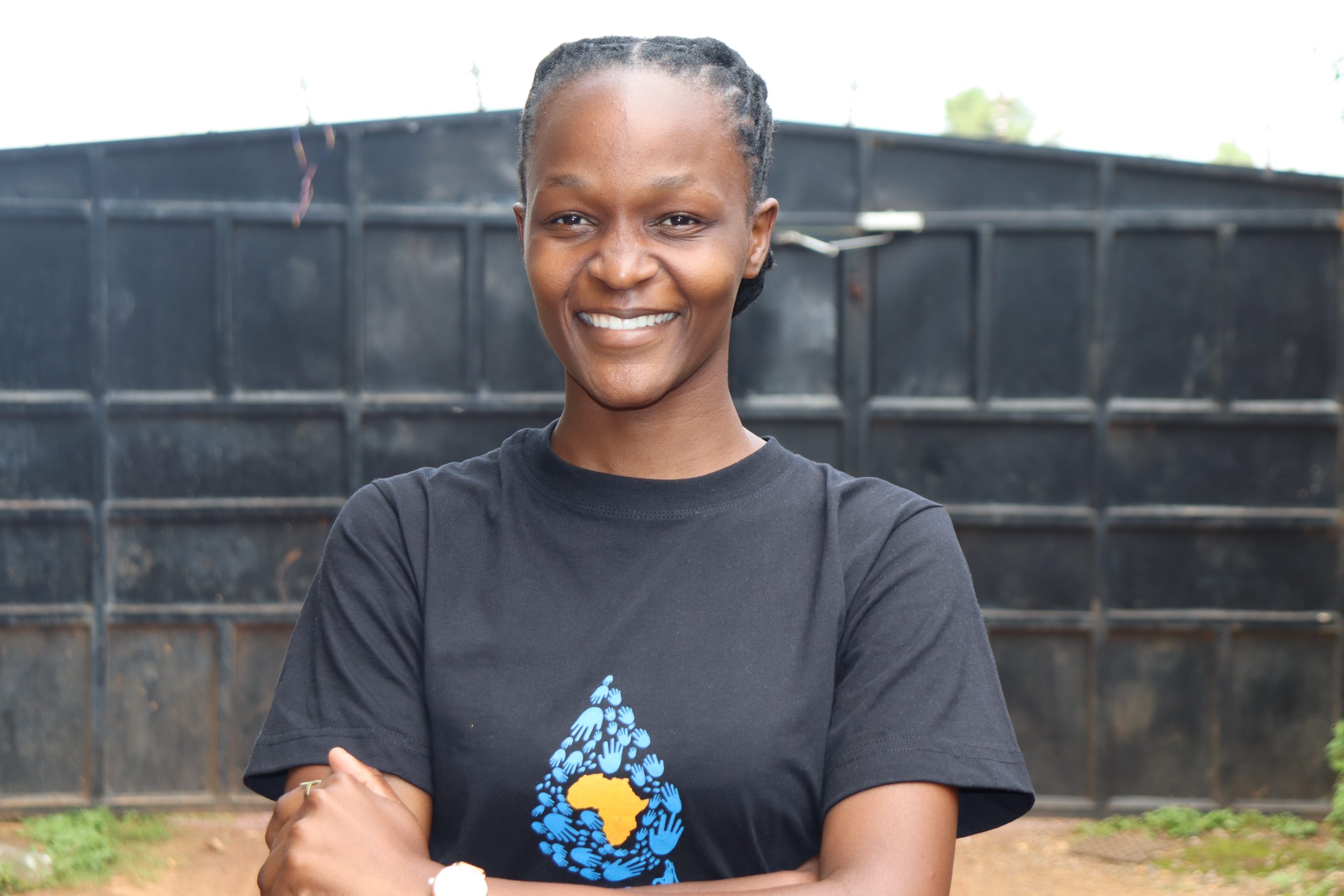Lwanda K Primary School has three current water sources, but none can meet the demand of the school's enormous population of 700 students and 27 staff or provide safe, sufficient water. There are rainwater tanks, a protected dug well, and a community spring. This sounds like plenty of resources to use. But the water they provide leaves students struggling with water-related illnesses. To make matters worse, it costs them the time and energy they need for learning.

Students pulling water up from the dug well.
The dug well is seasonal and requires a lot of energy from students. They must drop a container attached to a rope, let it fill, and then pull up the heavy, full container, trying not to spill its contents. The spring requires a trek over difficult terrain, and students must fight community members to get a place in line. The rain tanks are not large enough to hold enough water the few times they fill each year.

Students at the unprotected spring.
Twelve-year-old Salvana shared what she finds difficult about collecting water from the dug well.
"We only get water from the protected dug well situated on the school premises during rainy seasons, for it goes completely dry during drought seasons. The method of drawing water is also tiring, limiting the amount of water drawn on a typical day."
She also finds collecting water from the spring to be challenging.

Salvana at the spring.
"The distance to and from the water point, the spring, is so long, with very bad terrain. The poor accessibility and the queue at the waterpoint make fetching water [take] so long. The community members [when] we get [to] the water point do not allow us [to] fetch water until they have filled all their water containers," she said.
"The spring is not kept clean, raising eyebrows of the water quality," Salvana continued.

Salvana recounted an experience when she consumed dirty water, leaving her feeling ill and missing out on an important event in her young life.
"We were hosting visitors in school [on] the school closing day, and so the entire school was requested to carry water to assist in food preparation and cleaning the schools. After engaging myself in the day's activities, I got thirsty and had to borrow drinking water from my friend. A few hours later, after consuming the water, I started feeling a stomach upset, which worsened, and I had to be rushed to the nearby health facility. This made me miss attending the school closing ceremony, and I felt so bad about it, for I was to be recognized in the closing ceremony for having performed excellently in my class work."
"Because of the discomfort that comes along with being sick, I have to miss school until I fully recover."

Salvana.
Salvana and the other students deserve a clean water source on their school campus, enabling them to collect water quickly and safely. With accessible water that will not make them ill, they can pour their time and energy into creating brighter futures.
Steps Toward a Solution
Our technical experts worked with the local community to identify the most effective solution to their water crisis. They decided to drill a borehole well, construct a platform for the well, and attach a hand pump.
Well
Abundant water often lies just beneath our feet. Aquifers—natural underground rivers—flow through layers of sediment and rock, offering a constant supply of safe water. A borehole well is drilled deep into the earth to access this naturally filtered and protected water. We penetrate meters, sometimes even hundreds of meters, of soil, silt, rock, and more to reach the water underground. Once found, we construct a platform for the well and attach a hand pump. The community gains a safe, enclosed water source capable of providing approximately five gallons of water per minute. Learn more here!
Handwashing Stations
Alongside each water source, we install two gravity-fed handwashing stations, enabling everyone at the school to wash their hands. Handwashing is crucial for preventing water-related illnesses within the school and community. Student “health clubs” maintain the stations, fill them with water, and supply them with soap, which we often teach them how to make.
Latrines
We will construct two Ventilated Improved Pit (VIP) latrine blocks designed to prevent fecal disease transmission. Each latrine features a cement floor, making it easy to use and clean regularly. Three stalls will serve the girls, and three will serve the boys.
School Education & Ownership
Hygiene and sanitation training are integral to our water projects. Training is tailored to each school's specific needs and includes key topics such as proper water handling, improved hygiene practices, disease transmission prevention, and care of the new water point.
To ensure a lasting impact, we support forming a student health club composed of elected student representatives and a teacher. These clubs promote hygiene practices schoolwide and keep handwashing stations well-stocked. This student-led model encourages a sense of ownership and responsibility.
Safe water and improved hygiene habits foster a healthier future for everyone in the school and the surrounding community.

 Borehole Well and Hand Pump
Borehole Well and Hand Pump
 Rehabilitation Project
Rehabilitation Project



















